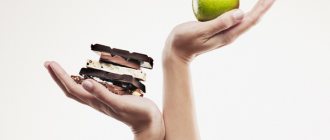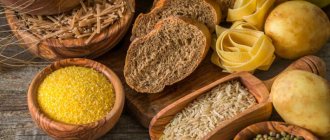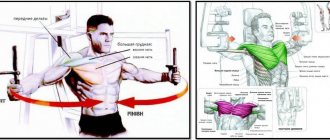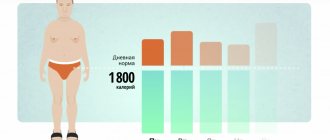Delicious dishes that can be prepared for future use.
Cold oatmeal, cutlets, meatballs, lasagna or stuffed peppers can be prepared for future use. The side dish “lives” in the refrigerator for a day, the sauce lasts for two days, eat the salad fresh, but you must cover it with a lid and under no circumstances leave a spoon inside.
It is better to buy bananas on the weekend and slightly unripe, so that they can be preserved until Friday and always be at hand. Don't be afraid of butter and full-fat milk, you're not a dry bikini, after all.
Cold oatmeal with fruits, berries and seeds
Yes, there is an error in the recipe: pumpkin seeds are called cardamom. Sorry.
Ingredients for four servings:
- 360 g oat flakes
- juice from 4 oranges
- 160 ml water
- 20 g pumpkin seeds
- 10 g sunflower seeds
- 20 g raisins
- 2 apricots
- 40 g blueberries
- 4 strawberries
- 4 spoons of natural yogurt
Take the largest oatmeal flakes, the least processed ones, that is, those that require cooking - they have more fiber and vitamins.
In the evening, put the flakes in a blender and squeeze the oranges into them (if the pulp gets in, it's okay - it tastes better), and then blend for 30-50 seconds. In a separate bowl, mix pumpkin seeds, sunflower seeds and raisins, cover them with water. Close the container with ground oatmeal tightly with a lid, and it would be better to cover the seeds and raisins with something. Place both bowls in the refrigerator and forget about them until the morning.
In the morning, place the oatmeal mixture on plates, add seeds and raisins to it, and then decorate the dish with your favorite fruits, berries, nuts, honey or natural yogurt. If you still have oatmeal left after breakfast, you can safely store it in the refrigerator for 2-3 days - nothing will happen to it.
We have calculated the calories for the ingredients listed above, so if you add anything else, the numbers will of course be different.
One 220g serving contains: 450 calories | 14 g protein | 9.7 g fat | 74 g carbohydrates
The 3500 calorie rule.
Published in 2014 in the International Journal of Obesity, the results of another study indicate that the recommendation of a calorie deficit of 3,500 per week (or 500 per day) is a general rule of thumb that could be revised.
Scientists wanted to see if the 3,500 calorie rule could accurately calculate weight loss. However, the achievements turned out to be much more modest than those predicted by this rule.
The reality is that there are many more factors that influence weight loss results than just cutting calories. Various metabolic factors, such as internal satiety signals (when you feel hungry or full) also play an important role.
Although the 3,500 calorie per week deficit rule may not be reliable, it is still recommended for weight loss among professionals. And to lose weight, you need to stick to it for quite a long time, says Dr. Joan Salge Blake, professor of nutrition at Boston University. You can create and maintain a calorie deficit in the following ways:
- Consume fewer calories
- Increase physical activity without changing calories
- Combine the first and second methods
The bottom line is that cutting calories combined with more activity (and therefore burning more calories) is usually the most successful way to lose weight, says Dr. Joan Salge Blake. Agree that if you eliminate 250 calories from your daily diet and go for a run, during which you burn another 250, then achieving a 500-calorie deficit will be much easier than cutting back on the amount of food you eat.
Sandwich with ham, tomato and cheese
Ingredients for two servings:
- 2 slices of rye bread
- 1/4 medium tomato
- 2 slices of ham (50 g)
- 2 slices hard cheese (50 g)
Cut, fold, eat.
One serving contains: 382 kcal | 24 g protein | 19 g fat | 26 g carbohydrates
What nutrition programs exist for gaining muscle mass?
The daily diet of some nutrition programs for athletes includes special supplements that help gain muscle mass:
- Protein.
- Creatine.
- BCAAs.
- Gainer.
There are also ready-made pre-workout complexes. You can drink casein protein before bed.
To gain muscle mass, a special daily menu is prepared (see table):
| Eating | What is included in the diet | List of products | What determines the choice? |
| Breakfast | Large amount of carbohydrates. | Porridge, honey, juice, cereal with milk, fruit, jam. | Provide energy to the body for the whole day. |
| Lunch | Mostly carbohydrates. | Gainer (shake), chocolate bar, berries, bananas. | Replenish your energy supply. |
| Dinner | Proteins, fats and carbohydrates. | White meat, ham, TSP pasta, potatoes, rice, soup, vegetable salad. | Provide the body with necessary nutrients. |
| Eating before training | Carbohydrates. | Coffee with milk, cocktail, fruit salad. | Fill your muscles with glycogen. |
| Eating after class | Carbohydrates and proteins. | Sweet juice, cake, muffin, banana, protein shake. | Replenish lost energy. |
| Evening meal | Proteins and carbohydrates. | Eggs, sour cream, cottage cheese, dairy products, white meat, fish, vegetables, beans. | Restore muscles. |
It is recommended to use foods in the diet that do not contain preservatives, dyes, or GMOs, but are rich in vitamins, complex carbohydrates, high-quality proteins and fats.
Dinner
Meatballs with cheese
Ingredients for two servings:
- 250 g minced pork and beef
- 1 medium onion
- 40 g large oat flakes
- 50 g of any hard cheese
- salt, pepper, spices to taste
- sunflower oil
Turn the oven on to 200 degrees and let it heat up. Wash, peel and chop the onion as finely as you can. Pour boiling water over the oatmeal so that it covers 1 cm. Cut the cheese into cubes about 1x2 cm. Place the minced meat in a deep bowl, add salt, pepper and, if you want, add spices (basil, oregano, dill, cumin, etc.), onion and squeezed water flakes. Mix the minced meat thoroughly with your hands.
Place the frying pan over high heat and grease it with oil. When the oil is hot, wet your hands with cold water and roll the minced meat into a ball. Flatten it slightly and place a block of cheese in the center, then remember your golden childhood and roll it into a neat sphere, which you then need to put on a hot, oiled frying pan and fry until golden brown on all sides. Process all the minced meat in this way, and then put the fried meatballs in a heat-resistant form, cover with foil or a lid and place in the oven for 10-12 minutes.
One serving (200 g) contains: 593.4 kcal | 40 g protein | 40 g fat | 14 g carbohydrates
Rice with vegetables
Ingredients for two servings:
- 1 cup (200g) rice
- 1 medium carrot
- 1 medium onion
- 1 red bell pepper
- 1 clove of garlic
- 80 g frozen green peas
- 80 g canned corn
- 20 g olive oil
- 400 ml boiling water
- salt, pepper, spices to taste
All vegetables need to be washed, carrots, onions and garlic need to be peeled, seeds and membranes removed from the peppers, nothing needs to be done with the peas - let them rest in the freezer for now. Rinse the rice, and if it is in a bag, boil it as directed on the package.
Grate the carrots on a coarse grater, chop the onion and pepper into pieces of a size you like, and crush the garlic with the flat side of a knife and chop it up a little. The crushed garlic should be placed in a preheated and oiled deep frying pan or pan (it is better to have a non-stick bottom). Fry the garlic for 10-15 seconds, and add onions, carrots and bell peppers. Stirring occasionally, fry this whole bunch for 7-9 minutes, then add ice peas to them and, periodically repeating rotational movements with a spoon inside your frying pan, keep the vegetables over medium heat and covered for another 5 minutes.
If you've used bagged rice, you're at the finish line. You need to combine the finished rice with vegetables and simmer over medium heat for 3-5 minutes. And if you are not looking for easy ways, then put the water to boil, and while it is heating up, add dry rice to the vegetables. When the water boils, reduce the heat under the pan to low and pour in enough liquid to cover the rice and vegetables by two fingers. Close the lid and simmer for 15-20 minutes. You need to stir the whole thing and build a “slide” every five minutes, collecting rice from the edges and lifting it from the bottom. Once all the water has been absorbed, turn off the burner, close the lid and let stand for another 5-10 minutes without heating.
One serving (250 g) contains: 478.4 kcal | 10 g protein | 10 g fat | 84 g carbohydrates
Cabbage and cucumber salad
Ingredients for two servings:
- 200 g Chinese cabbage
- 2 medium cucumbers
- 1/2 green apple
- 1 tablespoon olive oil
- salt, pepper, herbs to taste
Wash everything, peel the cucumbers and apple. Roughly chop cucumbers, cabbage and apples, season with oil, salt and pepper. All.
One serving contains: 74.3 kcal | 1.4 g protein | 5.3 g fat | 4.7 g carbohydrates
What not to do when calculating a calorie deficit.
However, you shouldn't go to the extreme of trying to lose weight on a calorie deficit by cutting out food and exercising excessively. This approach will not be healthy or sustainable for long. "Just because a small calorie deficit is good for weight loss doesn't mean you should eat as little as possible to lose weight," says sports nutritionist Amy Goodson. According to the US National Institutes of Health, consuming less than 1,000 calories per day is dangerous to your health. Eating too little of them will actually hinder your weight loss efforts. Even for a short period, such restrictions contribute to the appearance of constant feelings of hunger, irritability, fatigue, diarrhea or constipation.
Such symptoms do not indicate healthy eating habits. When caloric intake is reduced for a long period of time (months), it leads to malnutrition, nutritional deficiencies and essentially leaves you in a state of starvation. As a result, the body will retain fat as a reserve source of energy, which will ultimately hinder weight loss and prevent you from achieving your cherished goal.
What is actually burned?
As a rule, when you are in a calorie deficit, it is not just fat that is lost. For example, water, although it does not contain calories, its fluctuations can significantly affect weight as such. Incorrect application of the 3,500 kcal rule would lead to the assumption that to gain 2 kilograms of weight you need an excess of 14,000 kcal. The same applies to losing 2 kilograms of water - it is clear that you cannot create a deficit of 14,000 kcal in a day. But it doesn’t have to be such a big deficit, because part of the weight lost will be water, which has no calories.
It's this misunderstanding that has given rise to the myth that low-carb diets provide some particularly cool metabolic advantage. Typically, a sharp decrease in the amount of water in the body in the first few days of a low-carb diet (from one to 6 kilos) is mistaken for a huge energy expenditure. But given that water contains no calories, the impression is wrong. If you return the same 1-6 kilos of “water” weight to its place, the effect will be the same, that is, zero. Water contains no energy.
The fact that carbohydrate reserves in the body are often used up and replenished quite quickly also seems to break the rule. But, firstly, 0.5 kg of carbohydrates does not contain 3500 kcal. There are about 2000 of them. Secondly, carbohydrates bind water, approximately 3-4 grams of water per gram. So, when replenishing the supply of carbohydrates by about 500 grams, in terms of energy we will get 2000 kcal, and in terms of weight – 500 grams of coals plus 1500 grams of water. Approximately 2 kg. At the same time, the 3500 kcal rule is still not violated.
And this is an important detail, since at the initial stage of the diet, the consumption and replenishment of glycogen and water reserves can be quite noticeable. Let's say, in the first few days of the diet, a person may notice a significant weight loss of 2-3 kilos. But this weight contains very few calories (no water at all, and a few carbohydrates), and in fact this sharp weight loss does not mean anything.
We are interested in body composition, changes in the tissues themselves, % fat and skeletal muscle / dry mass. And not only do they contain different amounts of calories, they are also consumed (burned) in different proportions, depending on gender, diet, initial percentage of fat, etc. Body protein also contains water (just like fat), so when it is broken down, water also leaves, and your weight may change a little more than calculated.
A woman's body is more likely to use fat for fuel (and burn less lean mass) than a man's, so a diet with enough protein and regular strength training will help maintain muscle mass (which means you'll burn more fat). A person with a higher body fat percentage also loses less lean mass (and more fat).
In this latter situation, a very overweight person, if we ignore (ignore) water and glycogen, may well come quite close to the calculation model based on the “3500 kcal rule”; it can also quite accurately describe the process at a later stage, when more fat has been burned. But in general, it’s always worth remembering that losing weight by those notorious half-kilograms takes longer than you might expect by roughly applying the “3500 kcal rule.”
Let's look at this example. Let's say a person who is in an energy imbalance - in a deficit - spends 10% of energy from dry mass and the remaining 90% from fat reserves. It creates a deficit of 3500 kcal per week. 10% or 350 kcal comes from dry matter/protein, which only has 600 kcal per pound (Lyle, the bug, makes us think in pounds!). This is less than 230 grams of weight lost. The remaining 3,150 calories will come from fat (about 0.9 pounds of fat). So, in general, in a week you will lose 634 grams of weight (230 grams of dry mass and 404 grams of fat).
This means that weight will be lost faster if more lean mass is burned, and I suspect that all sorts of centers and commercial weight loss programs recommend abstaining from strength training for this very reason (yep, that's the answer to the ban on strength training on the Dukan diet! ); training forces the body to conserve muscle while dieting (which is good), but weight loss is faster if more lean mass is lost. Imagine an absurd situation when all the weight is lost from the muscles, energy is consumed 100% from dry mass. Considering its low calorie content - about 700 kcal per pound, with the same deficit of 3500 kcal per week, you can lose 2.5 kg of weight (and muscle). But the composition (body composition) in terms of % fat will only worsen. Keep in mind, this isn't actually possible, I'm just taking such an extreme example to explain.
But in order to burn half a kilo of fat in this situation, you will need to make a deficit of 10% greater than 3500 kcal, since 10% of the energy is consumed in the breakdown of protein. So, to lose half a kilo of fat, you need a deficit of 3850 kcal, considering that 90% of energy comes from fat.
In fact, the 3500 kcal rule “doesn’t work” only because of a misunderstanding of the rule itself. It applies to fat burning if 100% of fat is burned. In the early stages of a diet, when water and glycogen are lost, more weight may be lost. And then, if the energy is not taken 100% from fat, then the rates will at least differ from the calculated ones.
In addition, there is another aspect that, as usual, complicates everything. It takes a little more calories [than the tissue itself] to gain weight. So, if, when broken down, half a kilo of muscle gives only 700 kcal, then to build half a kilo of muscle, you need 2000 kcal or even more (the exact number is extremely difficult to calculate).
So, even with an excess of 3500 kcal, and even if you gain muscle alone, you will not get 2.5 kg of muscle, but something closer to 800 grams, since it takes 2000 kcal to build 450 grams of muscle. And, most likely, the amount of muscle gained will be even less, since part of the stored energy comes from carbohydrate stores, in addition, part of the weight gained may be fat, etc.
To store fat from food, not much more than 3500 kcal is required, although even fat is not stored with 100% efficiency. So gaining fat will also require a little more calories, in addition, part of the weight gained will inevitably come from lean mass, and the amount of fat stored will still differ from the excess calories taken in.
But there is another extremely important factor that most people ignore or misunderstand. And perhaps it is even more important than the interpretation curve of individual aspects of the energy balance. {banner_st-d-2}










